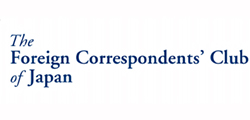Issue:
July 2025
The family of a Sri Lankan woman who died in immigration detention in Nagoya have been frustrated at every turn
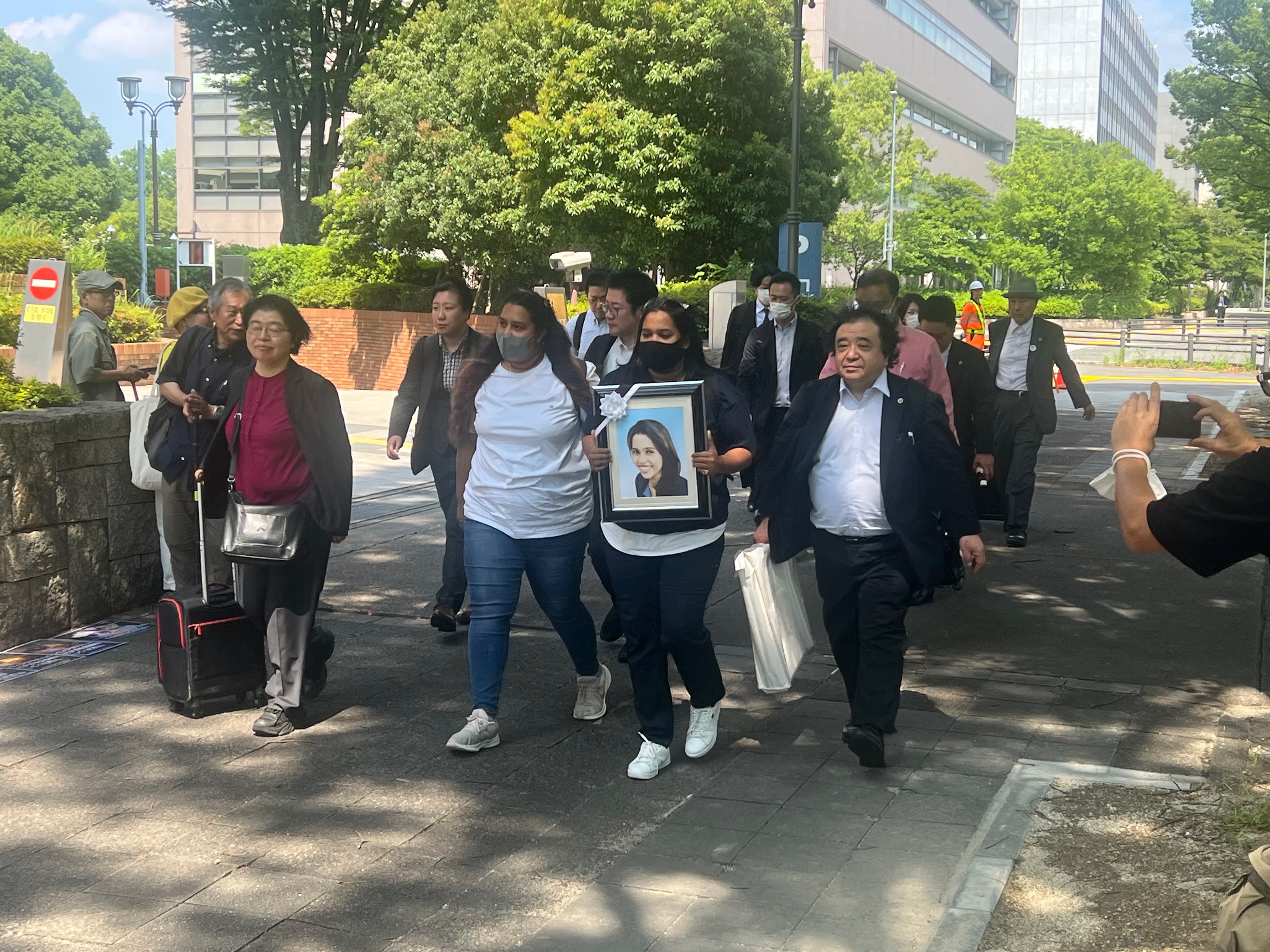
Four years have passed since a young woman from Sri Lanka died in the custody of the Nagoya Regional Immigration Detention Center. Ratnayake Liyanage Wishma Sandamali (commonly known as Wishma) had been held in custody there for a little more than six months before she was pronounced dead. She was 33 years old.
Bereaved family members filed a civil suit against the government on March 4, 2022, seeking compensation for her suffering and death. The 18th hearing in that suit was held in Courtroom No. 2 at Nagoya District Court on Wednesday, June 4. In a suit like this the primary questions before the court are first, whether the defendant is liable for the loss, and if so, what is the appropriate amount of compensation to be paid. On this day, the parties battled over the list of witnesses to be called to testify.
Both sides agree that some testimony by medical experts is required, but the plaintiffs insist that this is not enough. They demand that others, including staff members directly charged with Wishma’s custody who witnessed her bedridden agony, be called to testify and submit to questioning. They also demand testimony by the director of the Nagoya Detention Center, the person with overall responsibility for managing the facility where Wishma died. But the government attorneys resist. None of this is necessary, they say. The plaintiffs are at a severe disadvantage because the government controls nearly all the evidence, including potential witnesses who are government employees, and officials release evidence only after contentious, time-consuming disputes.
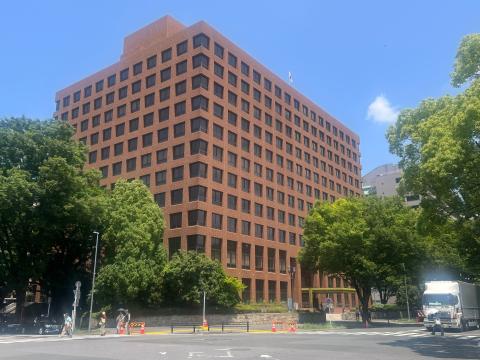
The big Nagoya courtroom provides seating for about 80 spectators. A crowd of supporters appears at each court hearing and, just before the start, they line up outside the courthouse to receive entry tickets. An attorney tells me their presence is important not only to provide encouragement to family members, but also to make a live display to the judges showing there is broad public interest in the case. On June 4, there are just enough seats to accommodate everyone.
As they have at preceding hearings, two younger sisters of the deceased and several members of the family’s legal team make a short procession on the sidewalk leading to the court entrance before a line of supporters who applaud as they pass by. Then everyone passes through metal detectors and enters the courthouse.
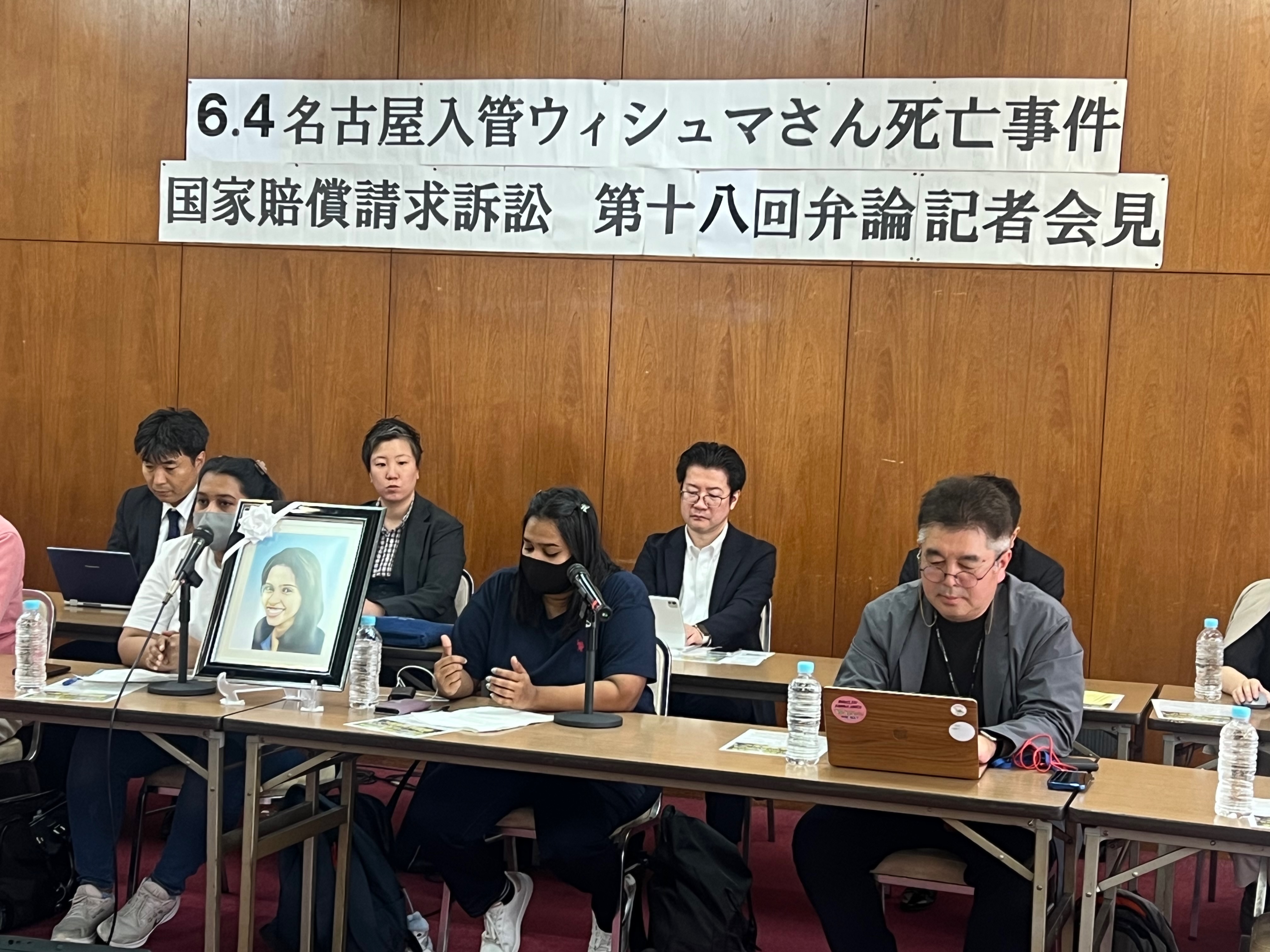
The hearing commences at 2:30 pm with passionate statements from two younger sisters of the deceased, Wayomi and Poornima. They present the most fundamental questions: why did their sister have to die and who was responsible? They see this court of law as the only place where they can get answers.
Wayomi speaks first. “I am told that the defendant’s filing states there is no need to call individuals who are important witnesses to this court to testify,” she says. “My sister was vomiting blood, vomiting food and drink, and she could not move. I think the nursing staff who were closest to her must explain to this court how they responded when my sister asked to be taken to the hospital and to get intravenous feeding.”
To achieve real accountability, testimony by the on-site nursing staff is necessary she says, but that alone would not be enough. There should also be testimony from the managers who oversaw the facility. Why didn’t they establish a system to provide basic medical care to her sister and others? These managers should be brought to court to explain.
She finishes with this demand: “You must bring the head of the detention facility to testify in court. I want to know why he did not provide medical care to my sister. I want him to explain why he didn’t take my sister to a hospital for treatment. I want him to explain this in court.” Although her words are heart-rending, Wayomi remains calm and dignified. She speaks in her own language, her words transmitted to the court by an interpreter.
Poornima repeats the message: “She asked many times to go the hospital for intravenous feeding. Her condition continually got worse. They could have saved her life. I want witnesses to explain why they did not take action.”
When the sisters finish their prepared statements, several attorneys rise in turn to reinforce their message. In a civil action like this, the plaintiffs carry the burden of proof. Here they must show that the Nagoya Detention Center violated a duty of care and that this was the cause of Wishma’s death. This requires medical records, testimony by experts and other witnesses, and of course, access to the video recordings. On this day, they repeatedly declare that they must question on-site nursing staff and other witnesses in order to carry their burden of proof.
In demanding that the head of the Nagoya Detention Center and others be brought to the court for questioning, plaintiffs’ counsel also stress that the significance of this case extends beyond the loss of one young woman. The larger issue is the poor medical care provided to detainees in Japan’s detention facilities. Wishma was not the first victim of substandard conditions in Japan’s immigration detention. According to news accounts, no fewer than 17 individuals have died in custody in recent years.
The case will be decided by a panel of three judges led by 49-year-old Takahito Otake, a veteran of more than 20 years on the bench. Judge Otake projects an air of authority as he manages the proceedings. He listens patiently to the pleas of the two sisters and their attorneys, but when they are done, he indicates that although the formal decision would be left to a future hearing, the court will likely follow the government line by limiting future testimony to medical experts.
Plaintiffs’ counsel
The family is represented by more than 20 attorneys working from small, independent offices. Many devote large portions of their time to representing needy clients like Wishma’s family who present issues of broad significance.
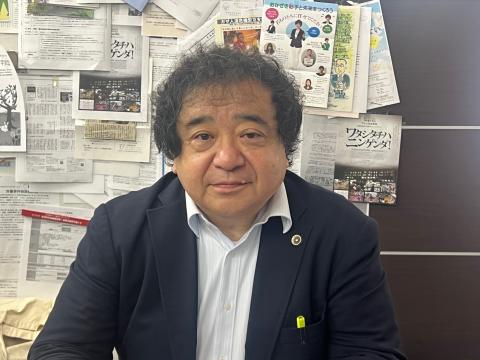
A middle-aged attorney named Shoichi Ibusuki who works from a small office near Takadanobaba station in Tokyo is the best-known among them. Ibusuki limits his practice to representing workers in labor disputes and foreigners fighting potential deportation and in other conflicts with immigration authorities. His devotion to protecting the rights of immigrants is so well-known that he even received an award from the U.S. State Department as a Trafficking in Persons Report Hero that recognized his work on behalf of foreign technical interns subject to abuse by their employers in Japan. The 2021 State Department report said "Ibusuki's advocacy, along with his unwavering and admirable dedication to helping foreign nationals enduring labor exploitation and protecting their human rights, have brought these issues to the forefront and raised their profile within Japan and around the world."
When I ask Ibusuki about substandard medical care for detainees he says that the situation has improved somewhat from the time of Wishma’s death. For example, there was no full-time medical doctor at the Nagoya facility at that time, but now there is. But he says that the fundamental problem of limited medical service – and outright denial – remains and that it affects the entire system.
Ibusuki tells me that the government has wanted to improve medical care for years, but has made little progress. He says that compensation has been improved somewhat, but this has made little impact in attracting doctors to work at the detention centers. “Many doctors have told me that compensation is not the real problem,” he says. “The most important issue is that they are not allowed to cure patients. They’re only allowed to provide care needed to keep detainees in sufficient condition to be deported. This is not a doctor’s work, they say. That’s why they won’t come to work at the detention centers.”
Plight on video
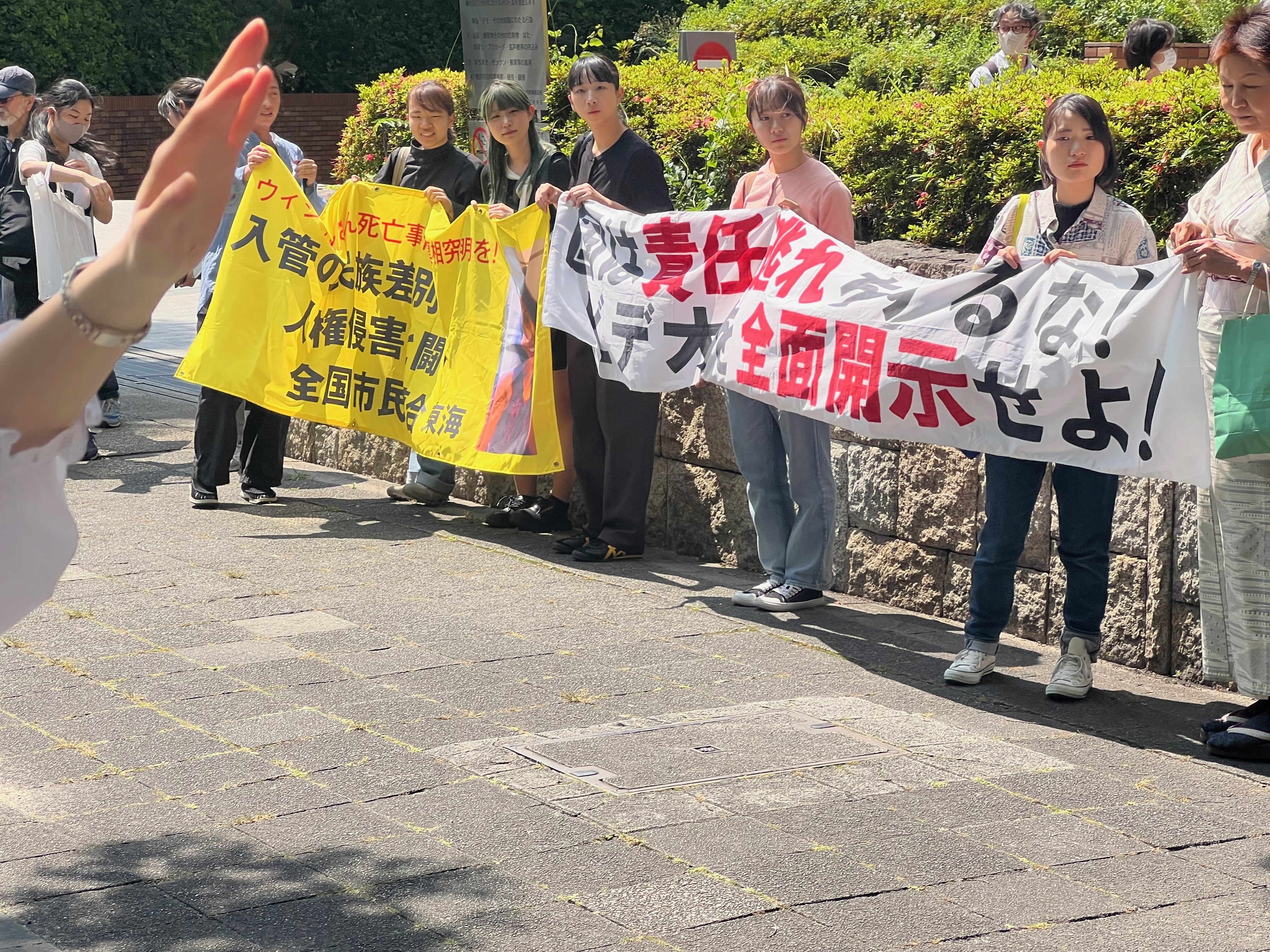
One extraordinary aspect of this case is the existence of 295 hours of video recordings of Wishma in the solitary cell in which she died. She was subject to round-the-clock video surveillance during the final 13 days of her life. Ibusuki explains that for most of her time in detention, she was held in an ordinary group cell, but she was transferred to a solitary cell after her health had taken a sharp decline. The solitary cells are equipped with overhead monitoring cameras.
At an early stage of the trial, attorneys for family victims obtained a court order that requires the Immigration Agency to preserve the entire 295-hour video archive. Then they obtained another court order that required disclosure of about five hours of the footage. They showed this video during court hearings on June 21 and July 12, 2023. Portions have been widely shown in public, including at a press conference held at the FCCJ in April 2023.
Images of the young woman wasting away and repeatedly asking for transfer to a hospital are truly shocking. Video excerpts show Wishma in extreme agony for weeks, unable to eat, at times with blood running from her nose and mouth. Immigration center staff not only denied her requests for assistance, but sometimes even mocked her struggle to live. After CDP Diet member Yoshifu Arita saw portions of the video, he said, "Her life was lost as a result of medical abandonment and caregiver abuse. It was nothing short of a slow murder."
Presumably, the primary purpose of video surveillance is to check the health status of detainees and ensure that they are not abused. But in this case, published video excerpts seem to provide proof of such abuse instead.
Judge Otake and his colleagues are expected to rule that testimony by the Nagoya immigration nursing staff, the director of the Nagoya facility and others will be unnecessary to resolve the civil claims before them. In court on June 4, Otake suggested the issues in this trial can be resolved by reference to other evidence. The most powerful evidence of government culpability is surely the video recordings.
Criminal prosecution?
The best way to investigate the individual responsibility of the director and other individuals is through criminal prosecution. In the Japanese system, prosecutors hold nearly absolute discretion to file charges and seek punishment for crime. The family filed a request for prosecution, but it was declined by the Nagoya Prosecutors Office. Japanese law does establish a Prosecution Review Commission to review non-prosecution decisions.
The family filed an appeal with this body and in a minor victory, obtained a commission recommendation in December 2022 that agreed with the family that prosecution was appropriate for the crime of professional negligence resulting in the death. But this was merely a recommendation. After reviewing this recommendation, the prosecutors again reached the decision not to bring charges.
The request for prosecution was surely a longshot. Although the Immigration Services Agency is a separate body from the Prosecutors’ Office, the head of the agency and other senior officials with oversight responsibility are often prosecutors on secondment. So, the family was essentially requesting that the prosecutors investigate themselves.
Information request
Although the civil trial drags on and the criminal complaint failed, the attorneys have another potential route to the full video archive. This is the personal information protection law, which provides a right of access to information in government files. The general rule is that the government must disclose requested information, but this is subject to broadly worded exceptions.
Wishma’s youngest sister, Poornima, filed a request with the Immigration Services Agency in February, but on March 26, the agency denied the request, citing two reasons: other persons are visible in some of the video, and disclosure would threaten the security of the Nagoya immigration center. Government agencies frequently make partial disclosures, holding back portions they deem exempt from disclosure, but in this case the agency issued a total denial, releasing nothing. The agency says it is technically difficult to separate segments of the video that can be released from other segments that should be withheld. In Ibusuki’s opinion, the agency’s response is “preposterous” (arienai). He joined with four other attorneys to file suit in Tokyo District Court on May 20.
Ibusuki tells me that many suits filed under this law have led to disclosure. He mentions perhaps the most prominent case, the request filed by the widow of Toshio Akagi, a Ministry of Finance employee ordered to falsify records in order to protect Akie Abe and others related to the Moritomo Gakuen scandal. Akagi could not bear the stress caused by his participation in the record falsification and took his own life. The Akagi information request has resulted in disclosure of many previously hidden records. In February, the administration of Shigeru Ishiba decided not to appeal an Osaka High Court judgment that rejected government arguments to withhold related records.
Three years have passed since the plaintiffs filed their civil suit. In Japan’s courts, cases like this typically proceed through brief hearings held at intervals of a month or so. The June 4 hearing was the 18th. When I asked Ibusuki why the court procedure has taken so long, he took a long pause before responding.
There are three reasons, he says. First, government attorneys dispute everything and often make incomprehensible statements. “She died in government custody without sufficient nutrition. It’s clear that the immigration center staff took no action to help her. If they had provided intravenous feeding, she would have survived. So we didn’t think the government would fight on the issue of causation. But the government position is that the cause of death is unknown. So we must prove causation.
“Second, there is the video recording. The government refused to disclose it. Ultimately, the court ordered partial disclosure, but this took more than a year of argument in court. And it took another six months before we were able to actually show it in court.
“Third is the dispute over witnesses. This has eaten up another six months.”
Three years have passed since the complaint was filed, but the court has yet to hear a live witness. The government follows a shutdown strategy: admit nothing, force plaintiffs to fight for access to evidence, always obstruct progress, always delay. Weeks turn into months, and months into years.
At the June 4 hearing, Judge Otake suggests that questioning of witnesses may begin before the year is out. The attorneys hope to obtain a judgment in 2026. After that, the next stage in this legal odyssey is likely to take place in Nagoya High Court, after one or both sides appeals the district court judgment.
Family members and their attorneys and supporters remain steadfast.
The next court hearing is scheduled for September 3.
Lawrence Repeta is author of Japan’s Prisoners of Conscience: Protest and Law During the Iraq War (Routledge, 2023). He has served as a lawyer, business executive, and law professor in Japan and the United States. The primary focus of his advocacy and research is transparency in government. He has served on the board of directors of Information Clearinghouse Japan, an NGO devoted to promoting open government in Japan, and the Japan Civil Liberties Union.
- Wishma died on March 6, 2021. For a complete trial record, including documents filed in court and other materials, see https://www.call4.jp/info.php?type=items&id=I0000094. Sekiguchi Taketo, a veteran reporter based in Nagoya, writes valuable reports for each court hearing for the yahoo news website. His report for the June 4 hearing is here: https://news.yahoo.co.jp/expert/articles/519effa83392979c4e41b5cadf2195885f331722.
- NHK published an early valuable account on the tragedy in English. “Death at immigration facility raises questions about medical care,” Wednesday April 14, 2021. https://www3.nhk.or.jp/nhkworld/en/news/backstories/1597/
- The names and addresses of 21 attorneys are listed on the complaint. The list shows 20 different office addresses. https://www.call4.jp/file/pdf/202203/3aa78c6c30716f66441fccfb24391dcd.pdf
- “US human trafficking report honors Japanese lawyer for protecting foreign workers,” Mainichi Shimbun, July 3, 2021, https://mainichi.jp/english/articles/20210703/p2a/00m/0na/004000c.
- Ibusuki’s comments regarding the lack of a doctor-patient relationship are matched by NHK reporting. An NHK report told of the experience of a Kurdish man named Colak Memeth. “Memeth's case is one of many in which doctors are prevented from building relationships with the detainees who need them. Yamamura explains that medical professionals often become resigned to the futility of the system, and quit. What's more, the Immigration Agency has found it difficult to secure dedicated doctors.” “Death at immigration facility raises questions about medical care,” Wednesday April 14, 2021. https://www3.nhk.or.jp/nhkworld/en/news/backstories/1597/
- https://www.fccj.or.jp/event/press-conference-death-shook-japan-wishma-rathnayake.
- Kyodo reported several such comments by Dietmembers and others made after viewing the video. Shin Hara, “FOCUS: Sri Lankan's dying agony disregarded in Japan immigration center,” Kyodo News, March 26, 2022. https://english.kyodonews.net/news/2022/03/de643a928d70-focus-sri-lankan-womans-dying-agony-disregarded-in-japan-immigration-center.html. For another example of such reporting, see https://mainichi.jp/english/articles/20230216/p2a/00m/0na/032000c
“Decision not to indict over Sri Lankan detainee’s death in Japan is unjust: panel,” - December 27, 2022. https://www.dailymirror.lk/front-page/Decision-not-to-indict-over-Sri-Lankan-detainees-death-in-Japan-is-unjust-panel/238-251110.
- The scholar David T. Johnson recently published a book on the review commissions, Japan's Prosecution Review Commission: On the Democratic Oversight of Decisions Not To Charge, https://link.springer.com/book/10.1007/978-3-031-19373-6.
- https://www.japaneselawtranslation.go.jp/en/laws/view/3152/en

